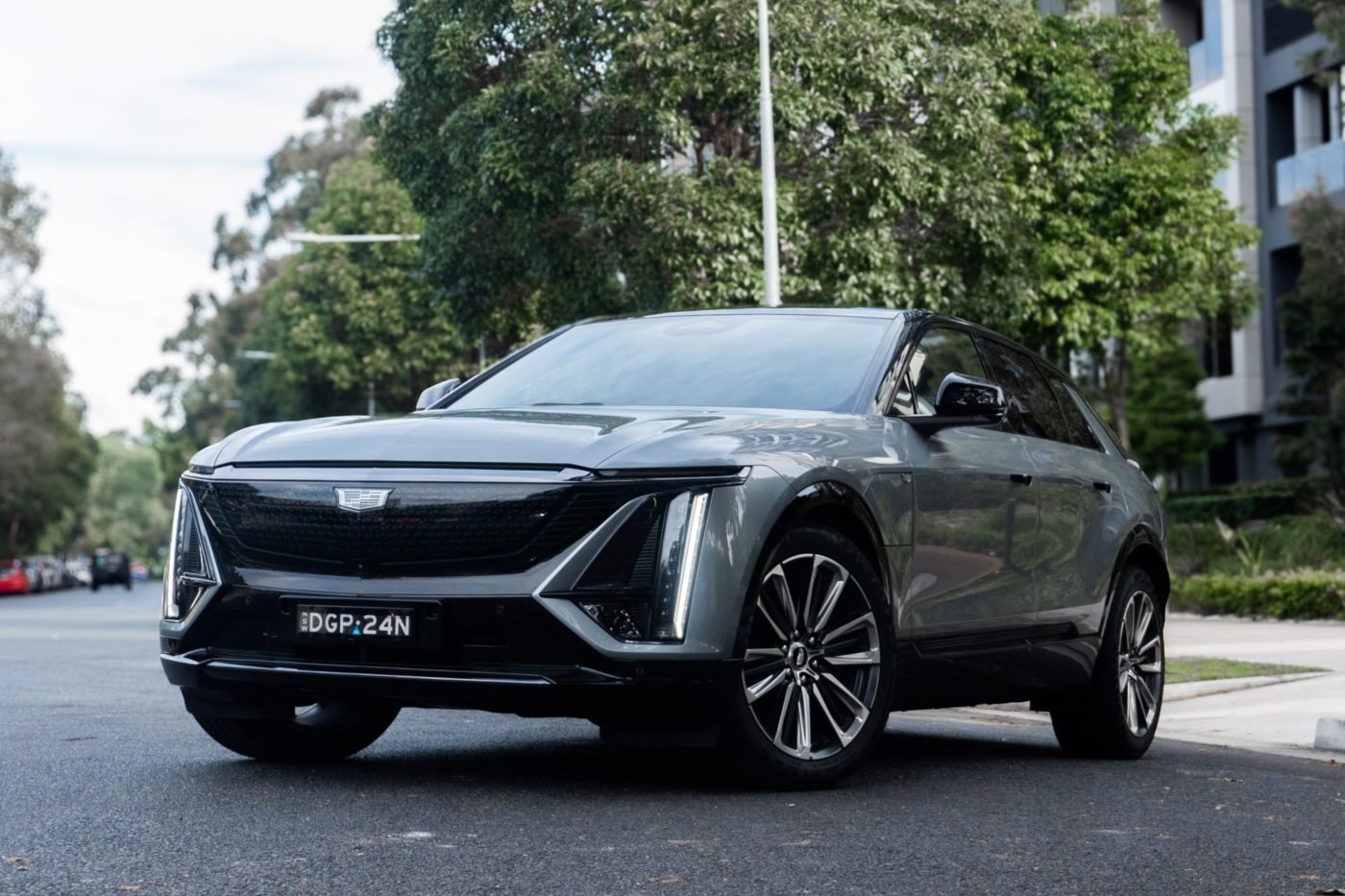While some luxury brands have spent the last decade apologising for their existence, rolling out smaller engines, hybrid compromises, efficiency guilt, someone forgot to tell Cadillac that luxury was supposed to feel guilty about itself.
The all-electric Cadillac LYRIQ arrives in Australia with a price tag starting at around $130,000 AUD on the road and the audacious suggestion that maybe, just maybe, luxury should feel luxurious again.
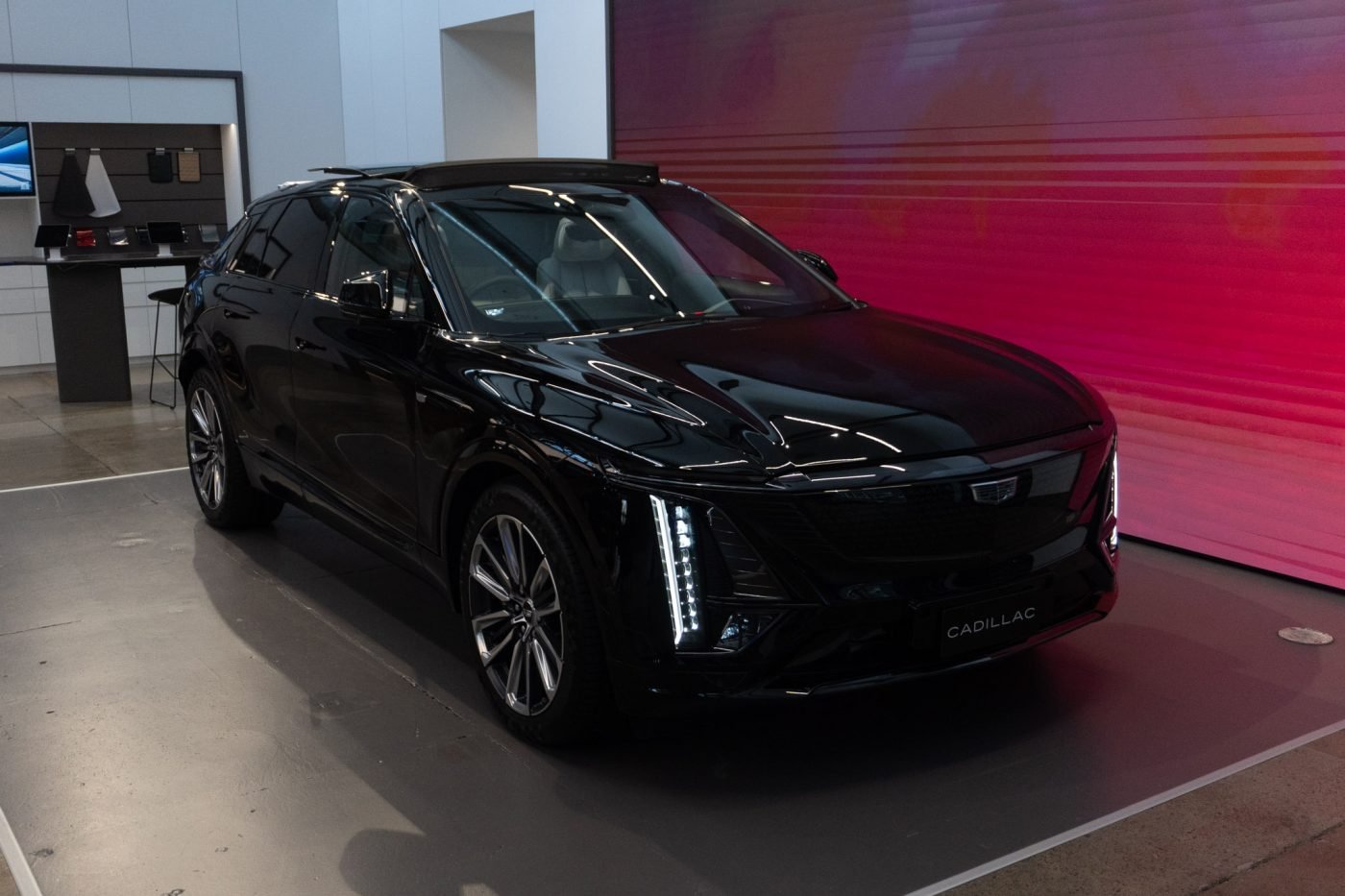
It’s a timely reminder that electric power hasn’t just changed how we fuel cars; it has completely rewritten what ‘premium’ means. When Rolls-Royce launched the Spectre as their “most refined car ever built” and Bentley remains committed to full electrification (albeit now by 2033), brands are reshaping what it means to drive an electric vehicle. This isn’t the distant future of luxury. It’s the present.
American Confidence in a German-Shaped World
Step back from any Australian shopping centre car park and you’ll see the problem. Row after row of similar Germanic SUVs, all subtly apologising for taking up space while charging premium prices for the privilege.
Curated news for men,
delivered to your inbox.
Join the DMARGE newsletter — Be the first to receive the latest news and exclusive stories on style, travel, luxury, cars, and watches. Straight to your inbox.
Cadillac doesn’t play that game. The Cadillac LYRIQ is the current case in point.
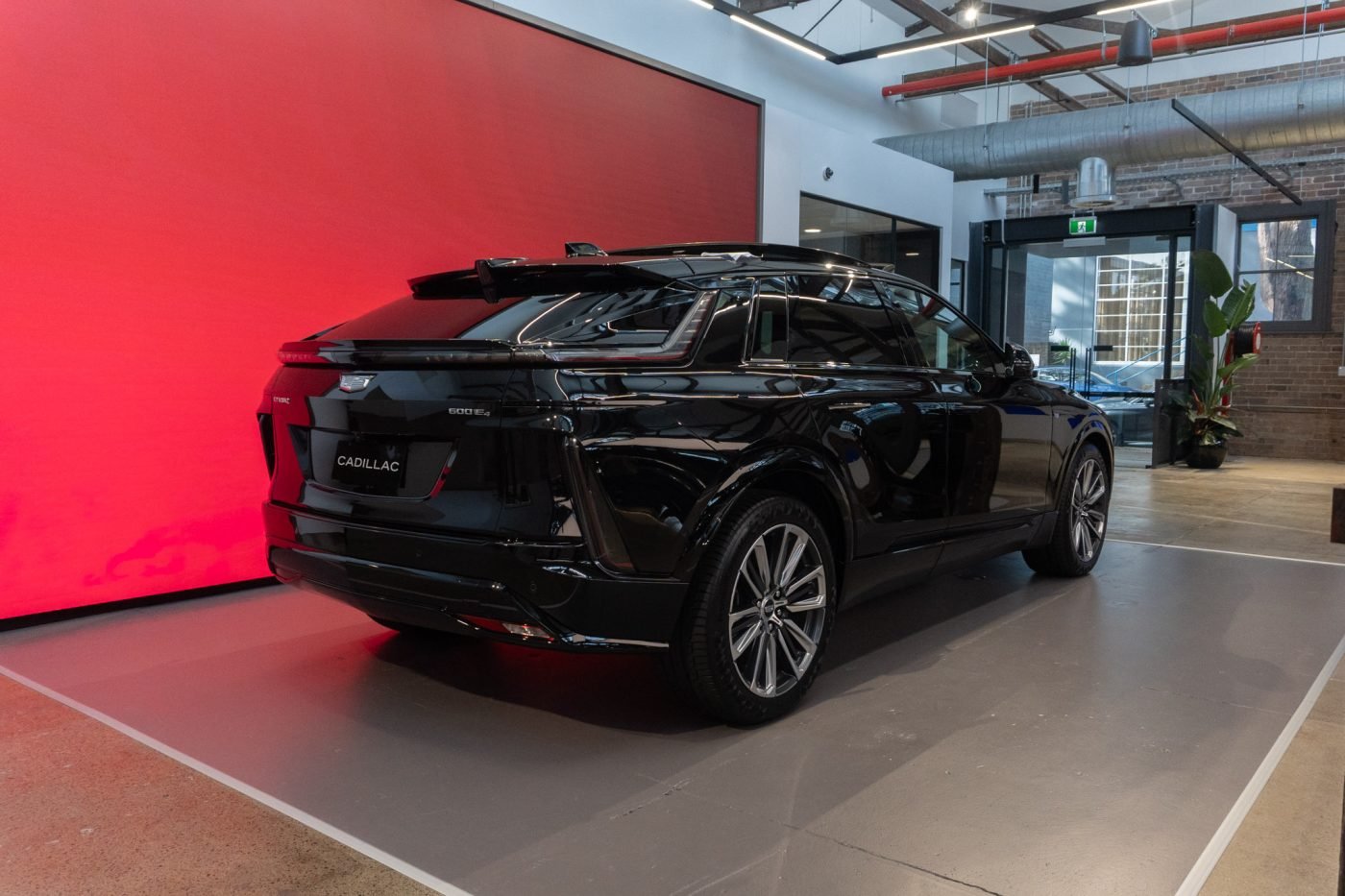
At just over five metres long, the Cadillac LYRIQ is unapologetically substantial without being obnoxious. The vertical LED signatures and sharp body lines create an unmistakable presence, that’s confident and very clearly not trying to be something it’s not. You won’t mistake it for anything else on the road, which in 2025 feels like a minor miracle.
The design language speaks to a different philosophy entirely. Where many luxury and wannabe premium brands are increasingly homogeneous — safe, efficient, apologetic — the LYRIQ commits fully to being a luxury vehicle. No hedging, no efficiency guilt, no marketing disclaimers about “dynamic efficiency.” Just proper American luxury, electrified.
Pure Luxury for Five Actual Adults
The moment you settle into the driver’s seat, the Cadillac LYRIQ’s proportions make sense. For Cadillac, the LYRIQ was never about maximising every millimetre like a Tetris puzzle, but instead creating genuine space for real humans to drive in comfort.
The flat EV floor means rear passengers aren’t playing footsie with a transmission tunnel, and total cabin passenger volume translates to real-world space that everyone can appreciate.
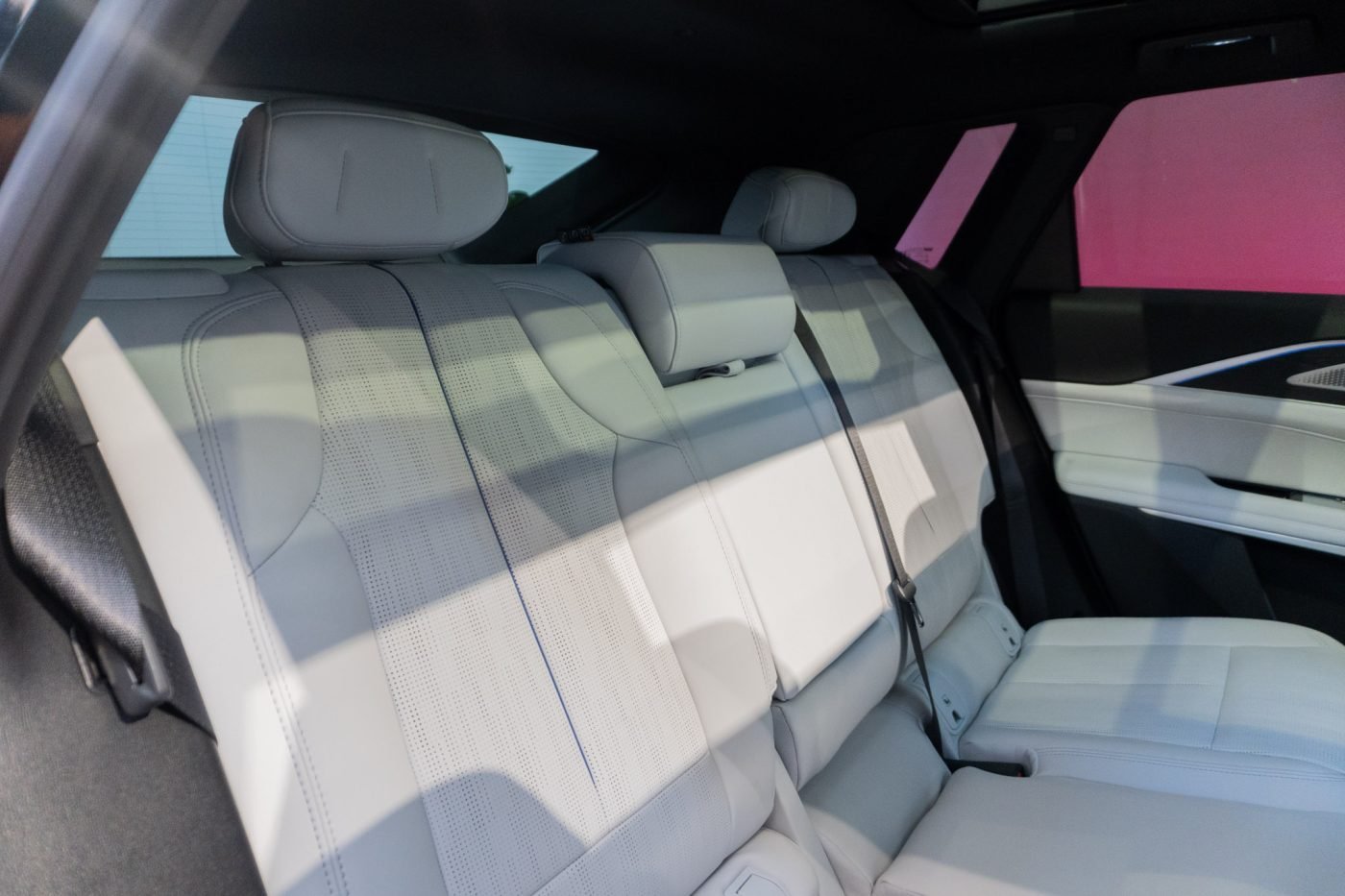
I’m no giant, but even when I grabbed a 180cm mate for ‘crash test dummy’ duties, there was still proper legroom in the second row. Not “adequate for the segment” or “surprisingly spacious for its class”. Space, pure and simple.
The panoramic roof amplifies this feeling, creating an airy cabin that doesn’t feel like you’re being packaged for transport. This is where the EV advantage becomes tangible. Without the compromises of engines, exhausts, and transmissions, the LYRIQ can dedicate its footprint to what luxury buyers actually want: room to breathe.
The Germans have spent years trying to convince us that “right-sizing” means accepting compromises. The sheer size of the LYRIQ suggests the wrong question may have been asked.
The Cathedral Quiet Revolution
Is it just me, or does each new EV model claim increasingly irrelevant acceleration times? Kick the Cadillac LYRIQ into life and the first thing you notice isn’t acceleration or handling, it’s the silence. Not just the absence of engine noise, but proper quiet.
Cadillac uses active noise cancellation, which works in concert with acoustic laminated glass to create what the brand calls a “symphony of solitude”. I’m not sure I’m on board with making a virtue of solitude, but you get the idea. It’s hushed and soothing.
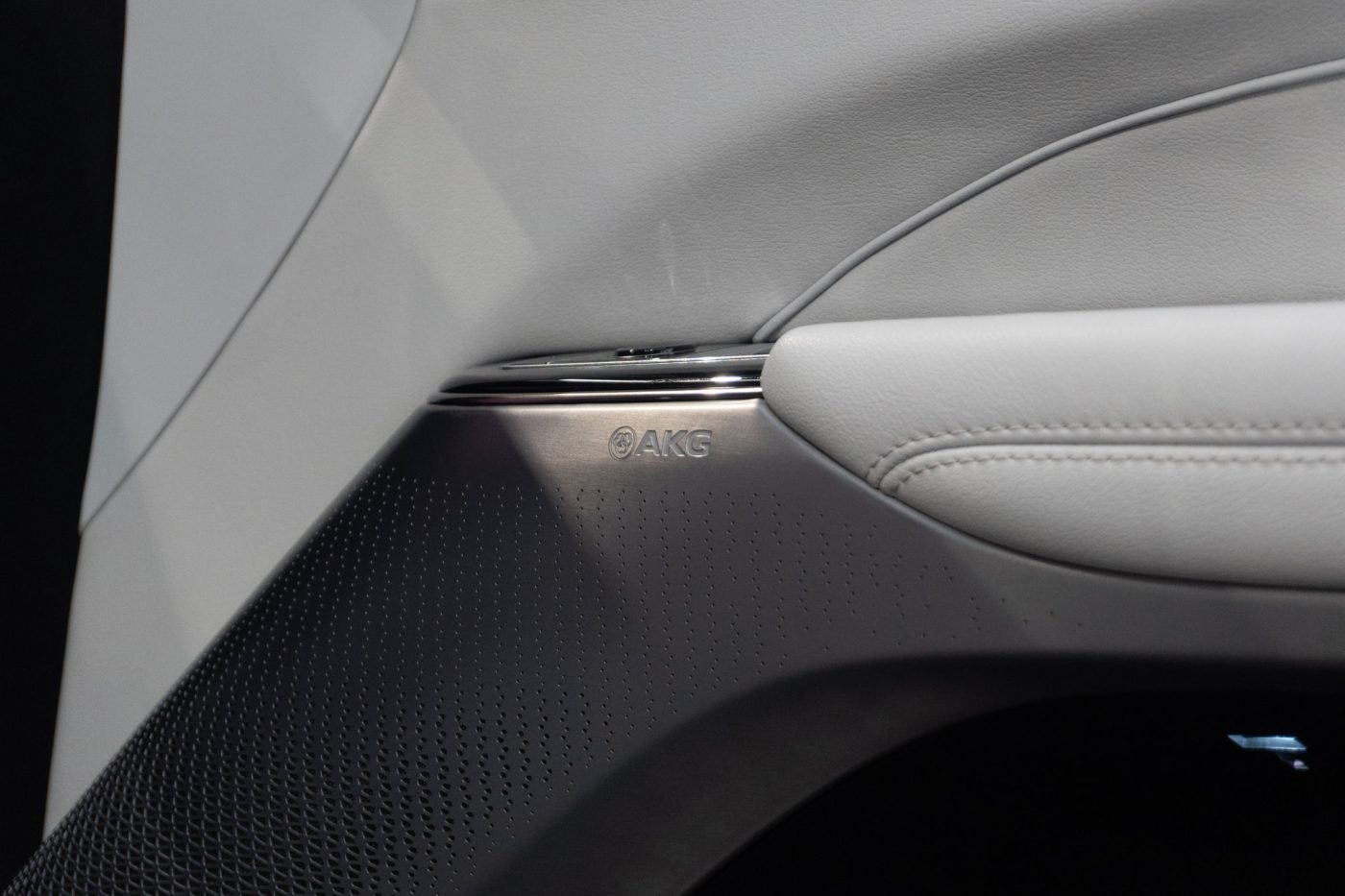
During our drive on freeways and the, at times, bumpy and rough roads to Mt. Buller in the Victorian snowfields, at the legal limit (or above!), conversation happens at a normal volume.
Pick a favourite track, and the AKG Studio sound system’s 19 speakers can showcase their full dynamic range, because they’re not competing with road noise, wind noise, or the mechanical symphony that defines traditional luxury cars. It’s the kind of refinement that makes you realise how much ambient noise we accept as normal.
Not that this attention to calm is in place of proper performance. When needed, thanks to 388 kW and 610 Nm, the LYRIQ can accelerate from standstill to 100 km/h in around 5.3 seconds. More to the point is the acceleration in real-world conditions. Overtaking is quite literally effortless.
That power figure equates to around 520 hp, but electric powertrains deliver performance and refinement in ways that internal combustion engines simply cannot. Indeed, the dual-motor LYRIQ’s instant, seamless power and torque delivery create a different kind of acceleration — seamless and relentlessly smooth. Need more? There’s a substantially quicker LYRIQ V variant due sometime in 2026…
Theatre, Not Technology
The Cadillac LYRIQ’s 33-inch curved display dominates the dashboard, and critics may complain about screen overload. For mine, this isn’t technology showing off; it’s theatre. The wraparound design creates an immersive environment that feels more like a private lounge than a traditional car cabin.
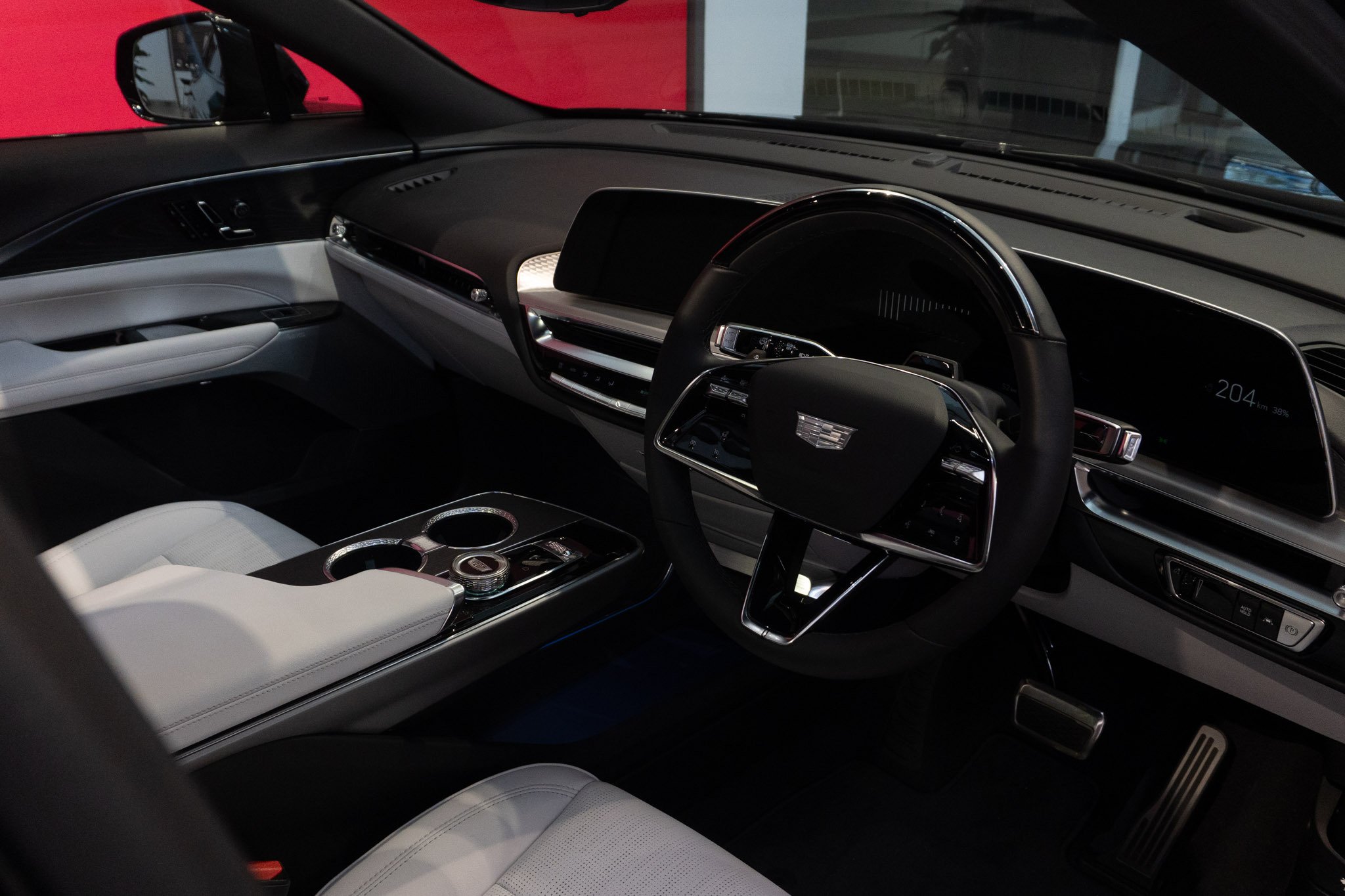
While the CarPlay display is not entirely convincing in its integration, the native system’s resolution and responsiveness are crisp and clean. Google Maps integration means navigation that actually works, while the climate controls retain physical buttons for the functions you use most frequently. Other EV carmakers, please take note.
The AKG audio deserves another mention here. Accurate, loud, the headrest-mounted speakers create an intimate soundstage that makes every podcast feel like a personal conversation and your playlist the star.
Size, but also Sophistication
Let’s call a spade a spade: EVs are heavy. Sometimes, very heavy. At least, the LYRIQ’s 2.7-tonne mass isn’t the liability it may seem at the outset. On the freeway and long country sweepers, the LYRIQ feels planted and unflappable in a way that many less resolved EVs don’t match. Body roll is well-controlled without resorting to the artificial stiffness (and artificial active anti-roll systems) that plagues some rivals.
The steering weight feels appropriate for a luxury SUV. Not sports car sharp, but precise and confidence-inspiring. You can’t say that about all EVs.
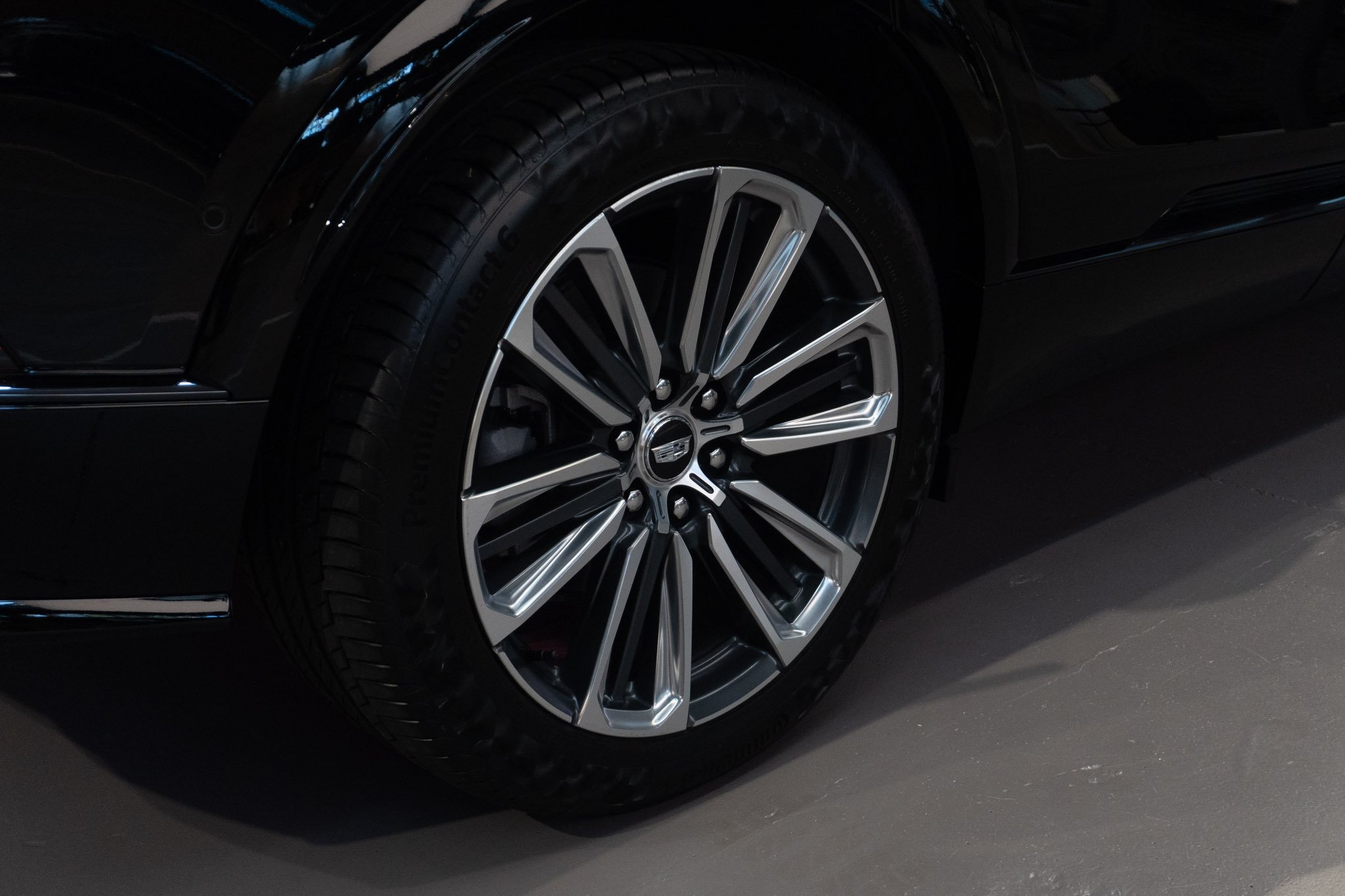
The 12.1-metre turning circle is a reality check for tight car parks (in part thanks to that rangy circa 3100mm wheelbase). The trade-off is stability that makes long-distance touring genuinely relaxing.
The ride quality is also in part a function of the dimensions. It’s excellent, especially around town.
There’s a one-pedal mode with increased regenerative braking that dedicated EV-ers will use in traffic. You can tailor this via the comprehensive Settings menu in the infotainment. Alternatively, squeeze the Cadillac’s single steering wheel paddle to slow the car more or deploy the auto hold function at a standstill. At first, I thought this was a gimmick – soon I was using it often. A genuine EV innovation.
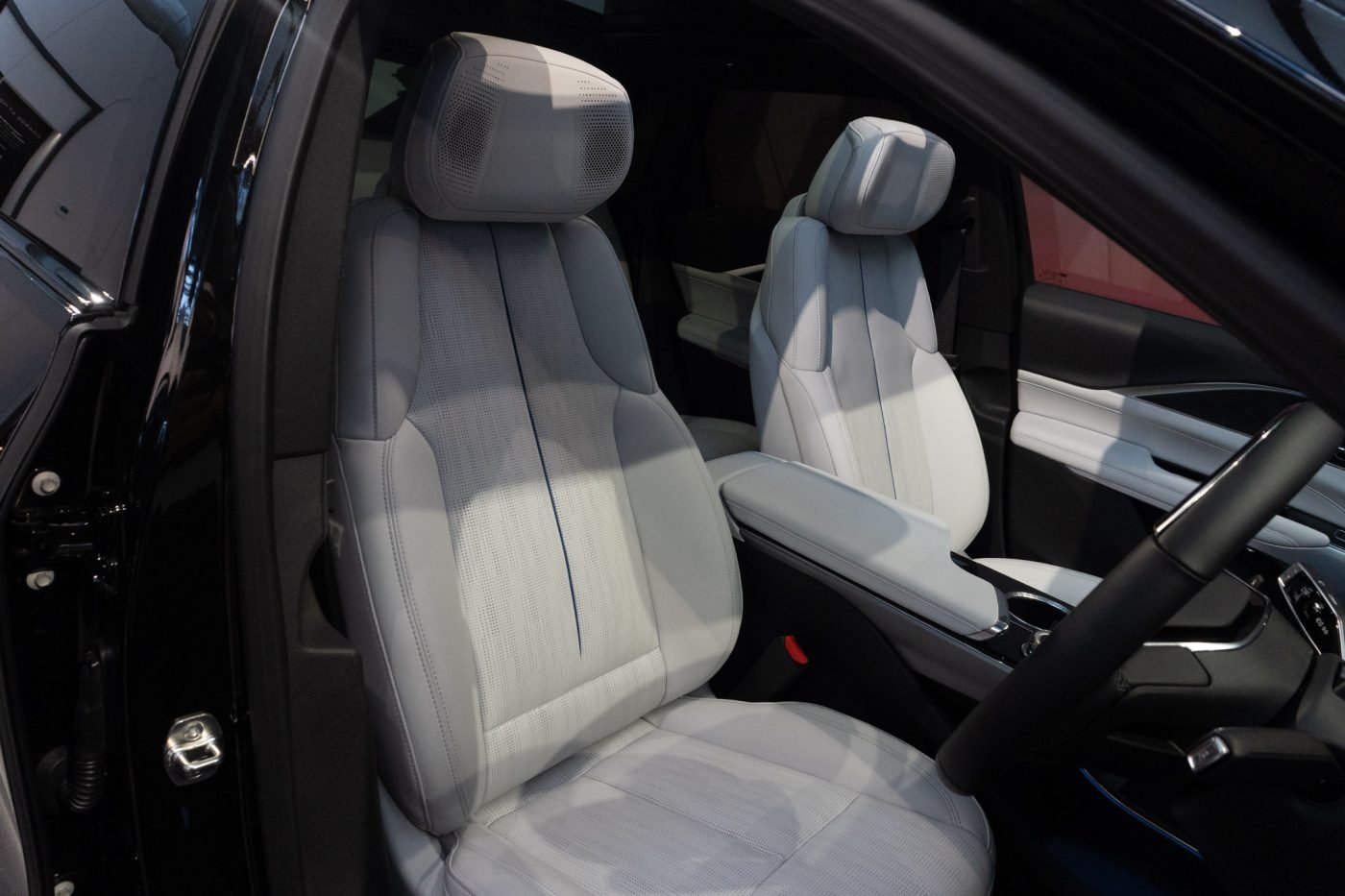
Speaking of CBD cruising, the LYRIQ’s size (and unashamed style) becomes part of its presence. It doesn’t apologise for taking up space, but the elevated driving position and excellent all-round visibility make navigation through traffic surprisingly stress-free for such a substantial vehicle.
Active driver aids help the cause. But I could do without the overzealous Driver Attention Assistant – a criticism of almost every new car now, as this safety feature is a must-have for achieving top marks in international crash ratings.
Electric as the New Premium Standard
The broader luxury car segment, with some caveats, has voted for electrification with its development budgets. Rolls-Royce positions the Spectre as its most refined car ever. Bentley is going fully electric. Even Ferrari is on the road to embracing electrification for its flagship models. The Germans are all debuting bespoke EVs to carve their spots.
The message is clear: electric power isn’t a compromise or concession, it’s the new standard for what premium means.
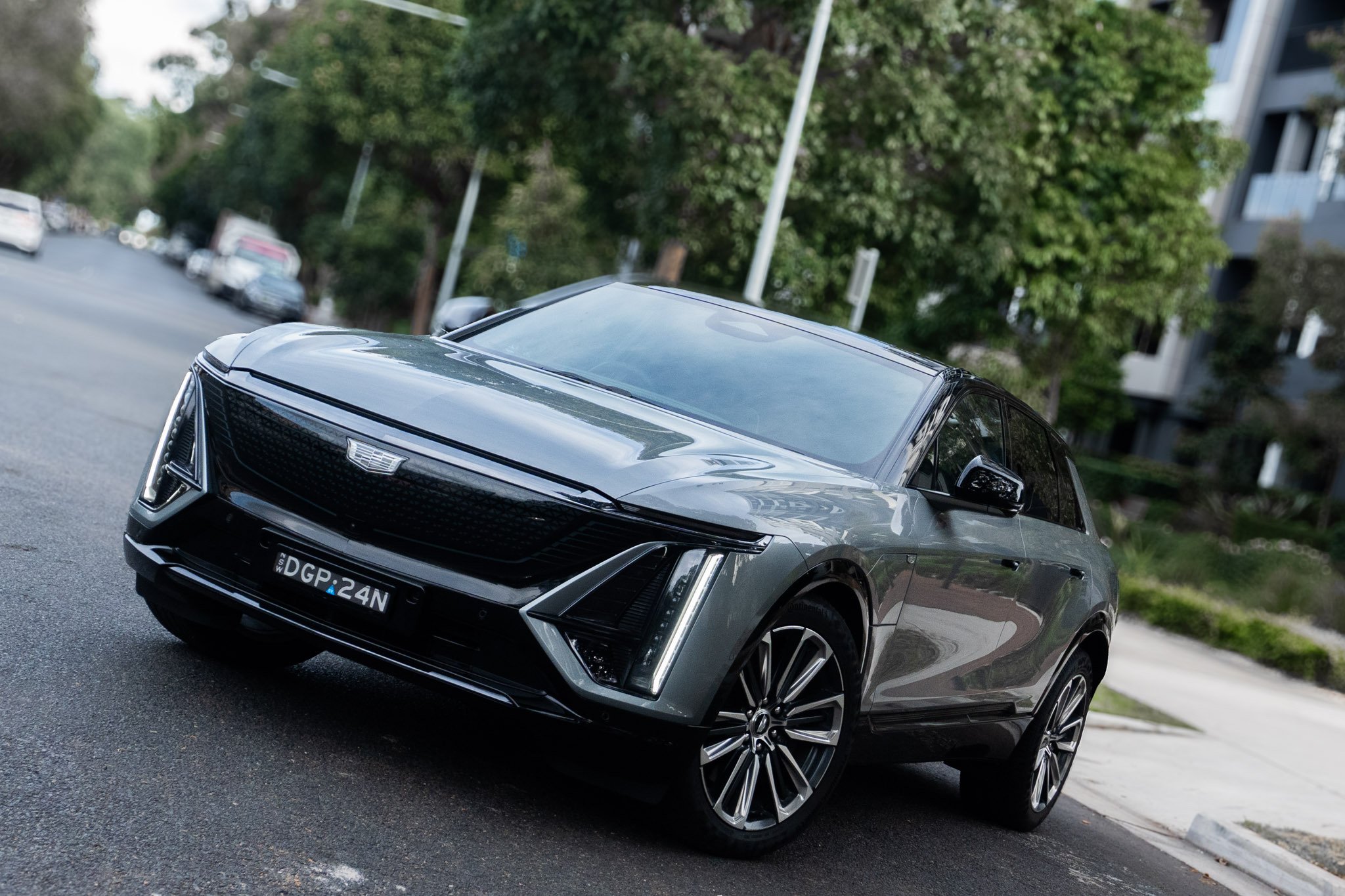
Offered in Sport and Luxury variants, the Cadillac LYRIQ arrives at this party at the right time rather than unfashionably early. While some rivals are still hedging bets with hybrids and efficiency messaging, Cadillac has committed fully to the electric luxury vision. At least when it comes to the models it will bring to Australia.
The LYRIQ’s 190kW DC fast charging might not match some 800V systems, but it’s perfectly adequate for real-world use. The charging curve remains consistent, and the battery management system prevents the dramatic slowdowns that plague some rivals.
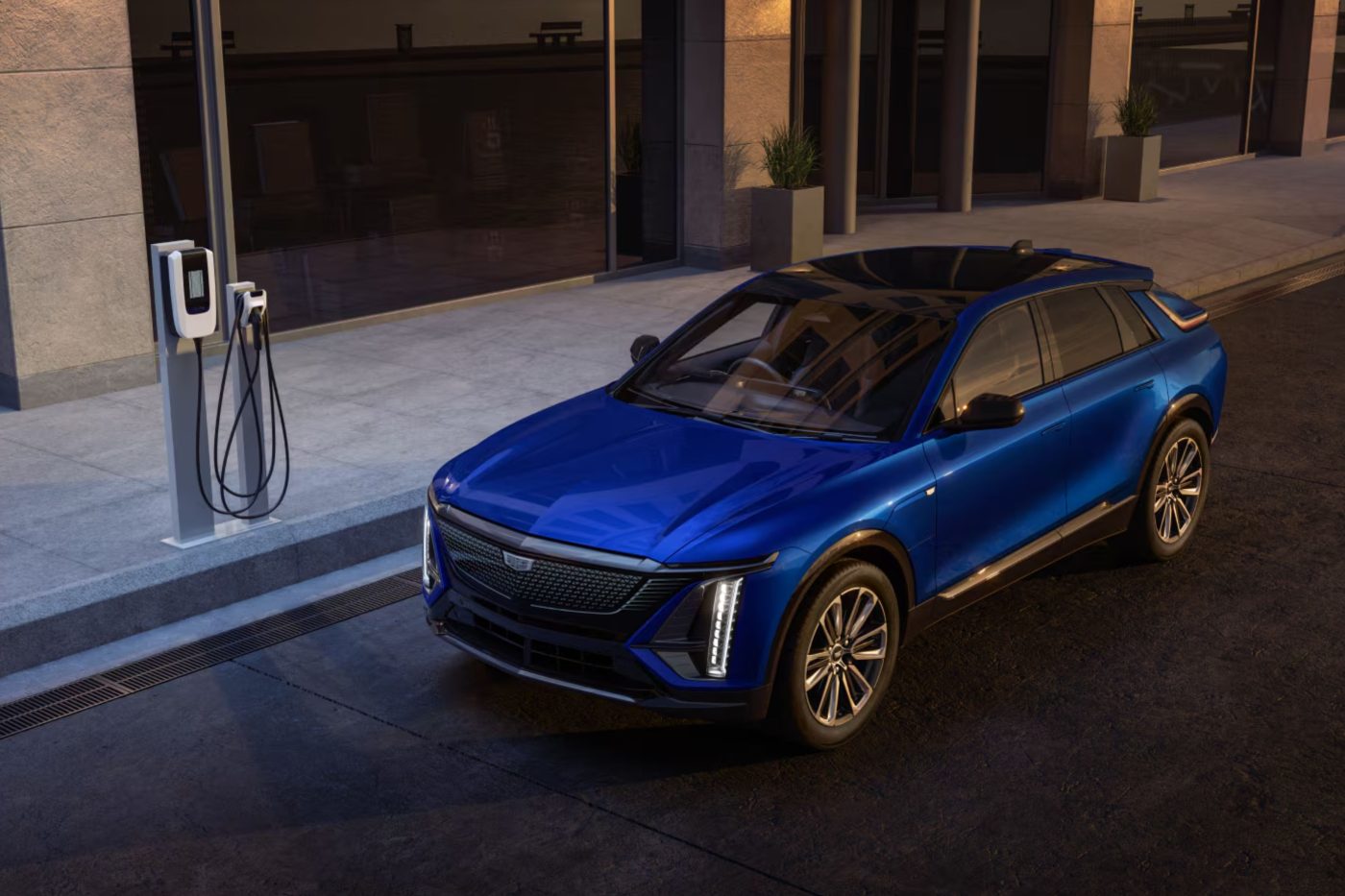
The theoretical 530km range is optimistic (as always), but 450km or more is easily achieved thanks to the large 102kWh battery pack.
For Caddy’s target market and most Australian luxury buyers, home charging capability and decent range make public charging an occasional convenience rather than a daily necessity.
Honest Luxury in a Dishonest Market
There are aspects of the Cadillac LYRIQ we’d love to see pushed further upmarket — some buyers will want a little more emphasis on rear seat luxury (good rather than stellar), and there are a few interior touches (switchgear and the like) that could benefit from added attention.
However, the vehicle is priced competitively, backed by a comprehensive warranty, and positioned honestly as a luxury brand challenger. That honesty extends to the driving experience.
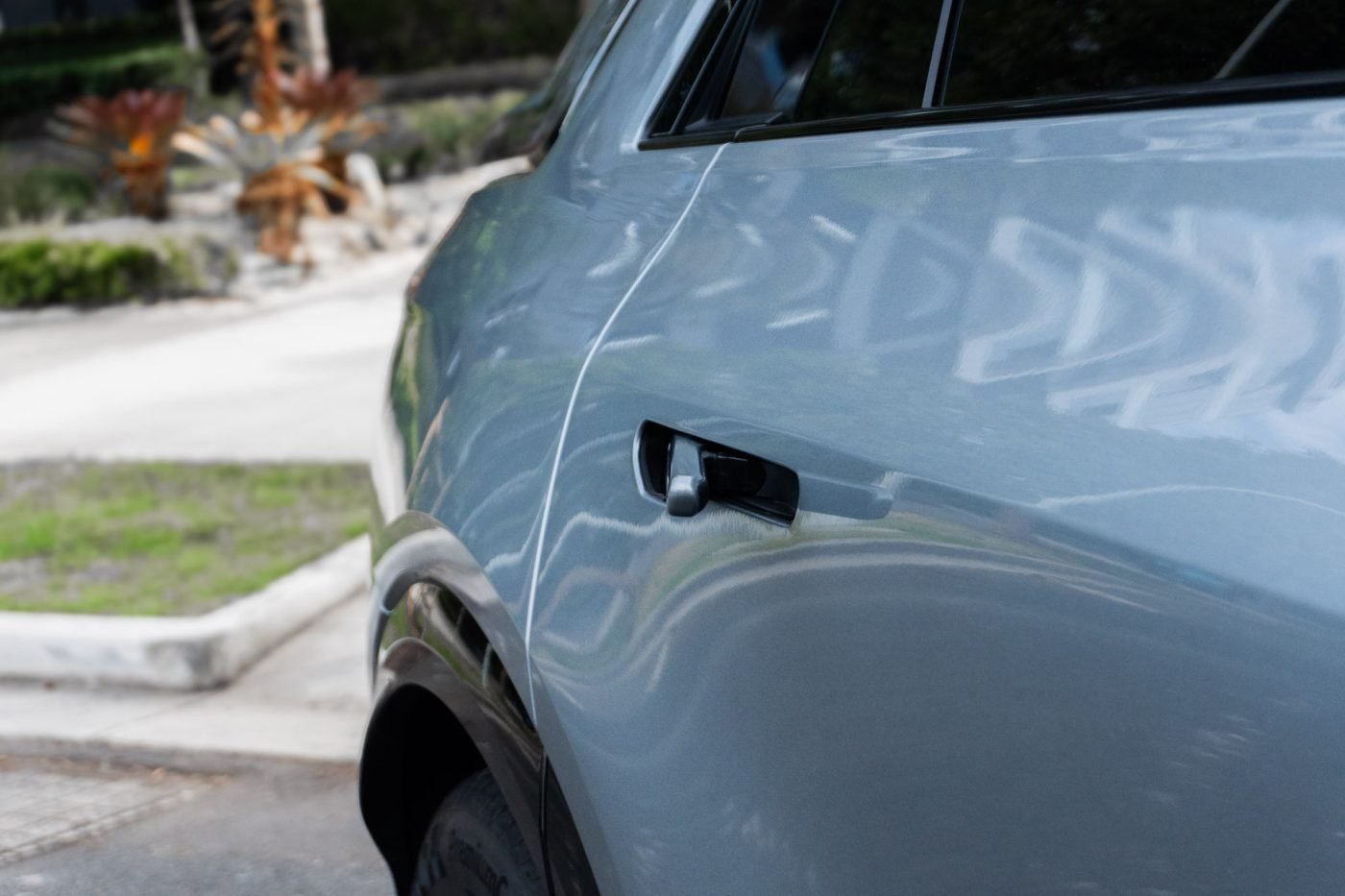
This isn’t trying to be a sports SUV or an efficiency champion. It’s a luxury vehicle that prioritises comfort, space, and refinement over headline-grabbing performance figures. In a market obsessed with 0-100km/h times and efficiency ratings, the LYRIQ’s focus on actual luxury feels almost subversive.
The Cadillac LYRIQ succeeds because it refuses to apologise for being a luxury vehicle. It’s large because luxury buyers want space. It’s quiet because refinement matters more than artificial engine notes. It’s distinctively styled because blending in isn’t the point.
In an era where electric power is making guilt-free luxury possible, the Cadillac LYRIQ commits fully to the experiential. It’s luxury for adults who’ve outgrown the need to justify their choices. And in 2025, that feels like a compelling call to arms.
